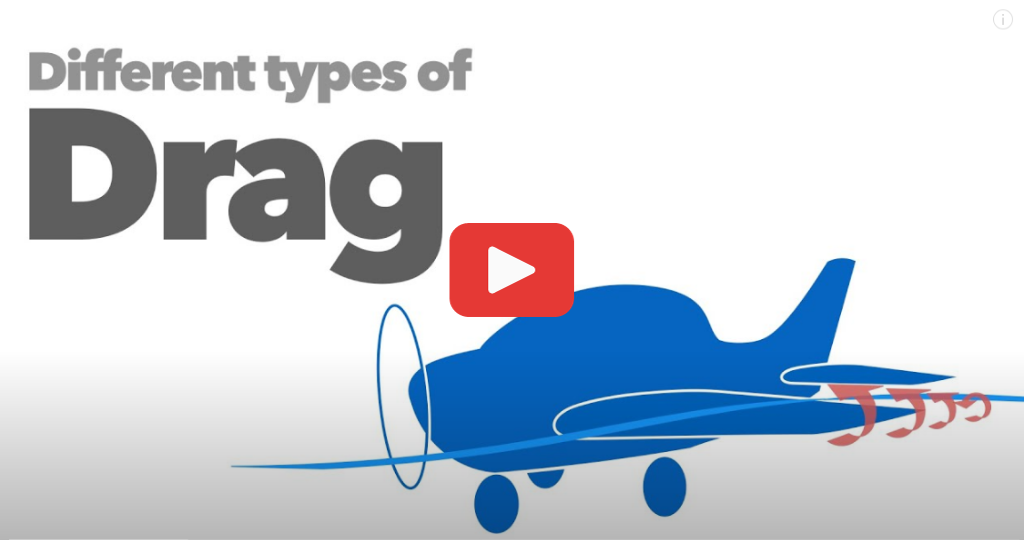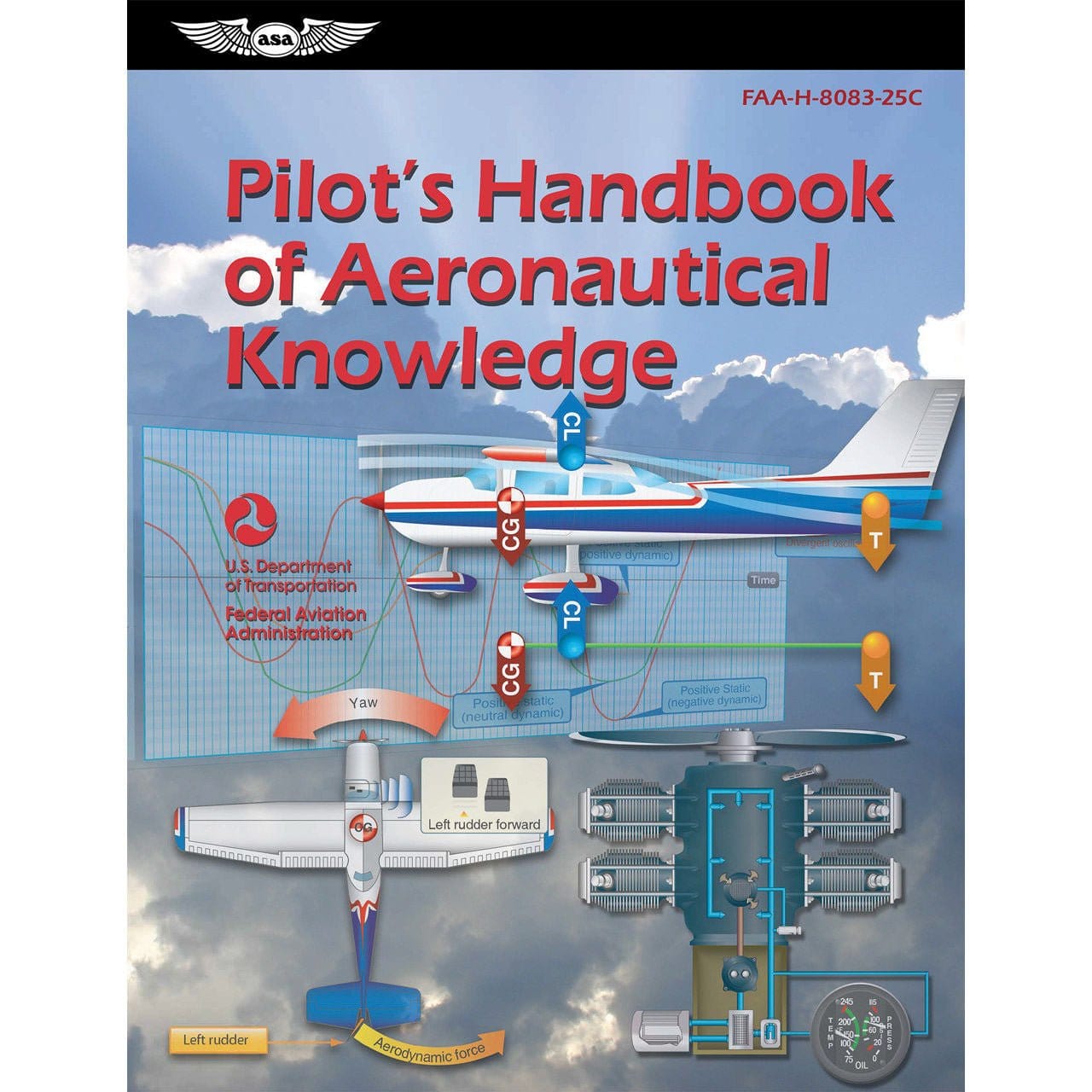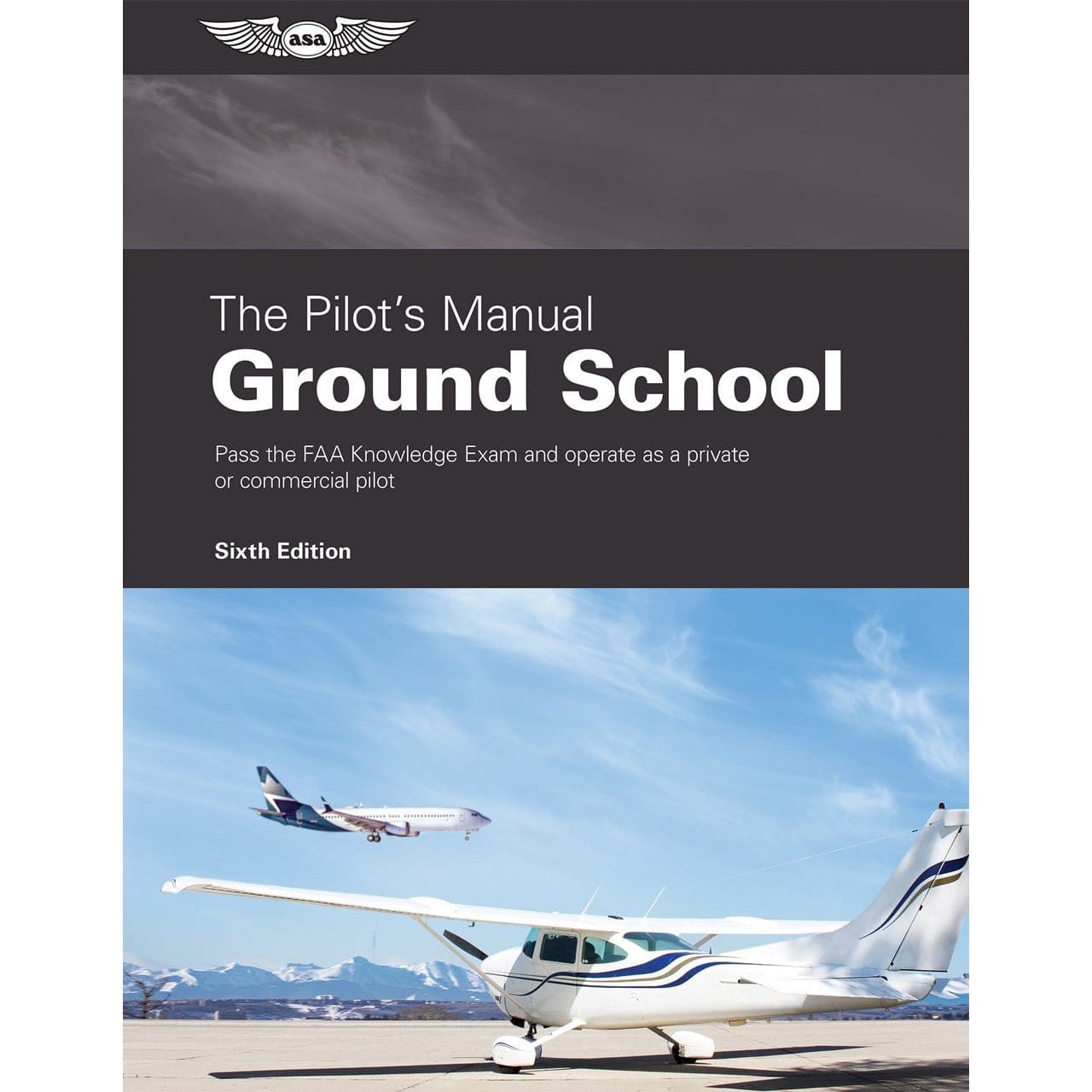What is one of the likely culprits for decreased fuel efficiency? Drag, we are looking at you. Drag is a backwards horizontal force generated by resistance as the plane moves through the air. It is one of the four aerodynamic forces of flight and is opposed by thrust.
Airplane drag is broken down into two main categories: parasite drag and lift-induced drag plus an extra bonus category that is unique to pilots of supersonic jets.
All types of drag can have significant effects on your plane. But before you let that drag you down, let’s take a look at the potential sources of airplane drag and talk about how some of them can be reduced.
1. Parasite Drag
Parasite drag is one of the two main categories of drag. It is caused by something about the aircraft’s materials, shape, or construction type that generates resistance. Parasite drag is unrelated to lift and can come in the form of skin friction drag, form drag, or interference drag.

2. Skin Friction Drag
Skin friction drag is a type of parasite drag caused by rough spots on the skin of the plane. Anything that takes away from a clean, smooth, perfectly aerodynamic surface causes skin friction drag. Think of Olympic swimmers carefully shaving their legs and wearing tight, smooth suits and caps. This is to reduce skin friction drag.
Common structural sources of this type of airplane drag are rivets and ridges for reinforcing flight controls. If ice, snow, dirt, dead bugs, or other debris is allowed to build up on the airframe, this too can cause skin friction drag since it interferes with the smooth and uninterrupted flow of air over the aircraft.
How to reduce Skin Friction Drag:
Smoothing the surface of your aircraft will help reduce skin friction drag.
Skin friction drag is one of the reasons why airplane deicing is a crucial step before you take off during winter weather conditions.
Aftermarket surface coatings inspired by shark skin’s drag reducing characteristics are also available. These nanoparticle coatings are designed to fill the small imperfections on your airframe while protecting against corrosion, extending paint life, and making contaminants less likely to adhere to the surface.
Regular cleaning with a product like Wash Wax ALL may also help remove debris and protect your plane.

3. Form Drag / Pressure Drag
Form drag or pressure drag is a type of parasite drag caused simply by the overall shape of the plane and how that shape interacts with the airflow. Some shapes are more aerodynamic than others, and the more cleanly the plane slices through the air, the less drag it will create.
This is why small, sleek planes generate less drag than large, blunt ones or why when you put your hand out a car window and hold it parallel to the ground you feel less resistance than if you hold it perpendicularly.
How to reduce Form Drag /Pressure Drag:
Decreasing the size of a wing's cross sectional area and using an aerodynamically shaped airfoil can effectively lessen form drag.

4. Interference Drag
The final type of parasite drag is interference drag. As air flows around our aircraft, we often think about how it tracks over the wings but forget that it is also interacting with other components like the fuselage, wing struts, landing gear struts, and more.
The direction and speed of the airflow is altered by each of these components, so the redirected streams of airflow hit each other and their interaction produces additional drag adding to the already existing form drag.
The total amount of drag generated is greater than it would be individually. Interference drag is greatest in areas with sharp angles like where the wing strut meets the fuselage or the underside of the wing as well as where the wings themselves attach to the fuselage.
How to reduce Interference Drag:
Reducing the angle between the components to less than 90 degrees helps minimize interference drag.
5. Profile Drag
Both form drag and interference drag relate to the size, design, and configuration of your aircraft. Sometimes both types of drag are considered together as the overall profile drag of the airplane. The profile drag is the amount of form drag plus the amount of interference drag.

6. Lift-Induced Drag
In addition to parasite drag, the second main category of drag is lift-induced drag or simply induced drag. Lift-induced drag is, as it sounds, a type of drag that is produced as a byproduct of lift.
When higher pressure air from underneath the wings flows up and over the top of the wing, this is a source of lift induced drag. Wings with a lower aspect ratio will generate more lift-induced drag than high aspect ratio wings.
Some aircraft are built with curved up wingtips known at winglets to help reduce the amount of lift-induced drag they generate.
Downwash is another source of lift-induced drag. Downwash is caused by the air and vortices rolling off the trailing edge of your wings. Their down angle shifts the relative wind direction downward as well. Since lift vector is perpendicular to relative wind, the lift vector also shifts backwards, generating extra drag.
How to reduce Lift-Induced Drag:
This can be reduced by the use of shark-lets or winglets at the wing tips.
Flight-Club’s What is Drag? video describes the different types of drag and explains how downwash causes lift-induced drag.
7. Wave Drag
The final type of airplane drag is one that general aviation pilots will not experience. To generate wave drag, an aircraft must be flying at supersonic speeds.
When a plane reaches supersonic velocity, the leading edge of the wing is flying at supersonic speeds. This produces a shockwave that travels back past the trailing edge of the wing which is flying at subsonic velocity. The shockwave causes the airflow to separate from the trailing edge of the wing thus creating wave drag.
Takeaways
No matter how aerodynamically an aircraft is built or how expertly a pilot flies it, that plane will still be subject to the forces of flight, and one of those forces is drag.
For most planes, drag can be either parasitic or lift-induced in nature. Pilots flying at supersonic speeds are affected by wave drag as well. All seven types of airplane drag, when considered together make up the total drag experienced by the aircraft.
Airplane drag can be reduced during the aircraft designing phase by creating a smooth aircraft skin placed on a sleek, streamlined fuselage.
A design that does not require wing struts, landing gear struts, and other numerous protrusions will result in lower amounts of drag as will one with winglets or a high aspect ratio.








